There are a lot of manufacturers of pellets for fueling your pellet grill out there and each brand has their own marketing claims about why their brand is the best. More often than not, these claims are usually meaningless.
However, there is a new brand of pellets on the market, from Royal Oak, and they are offering a product that appears to be unique and offers significant advantages over tradition pellets. Royal Oak is selling pellets made entirely from hardwood charcoal instead of compressed sawdust.
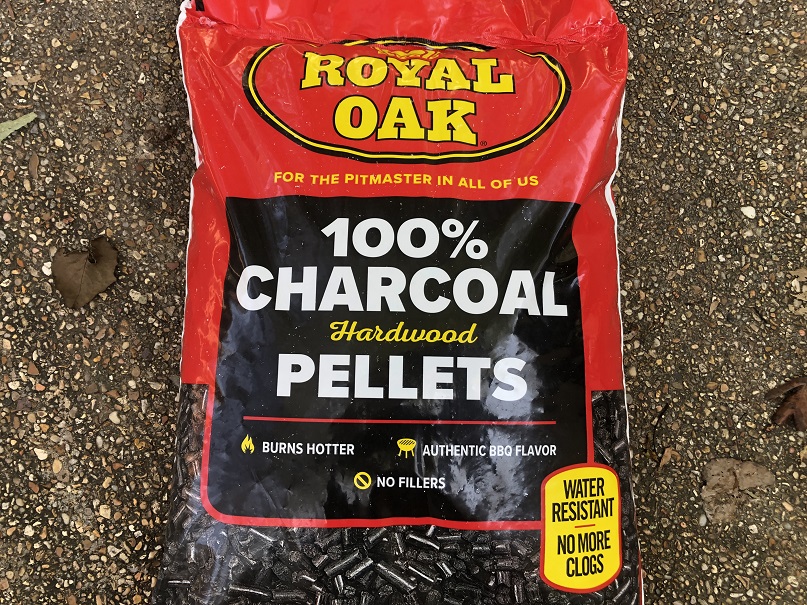
These pellets are widely available, I picked them up at my local grocery store, and will cost you just under $20 for a 20 pound bag.
I brought these charcoal pellets home and tried them out under several different conditions. After a lot of evaluation I can say that I am impressed by the product but am still trying to figure out the best way to work it into my barbecue arsenal.
By the way, there are zero affiliate links in this post and this review was not sponsored by anyone. I bought these pellets with my own money and do not care if you purchase them or not.
Let’s jump into the full charcoal pellet review to see what these pellets are all about.
Marketing Claims for Why Charcoal Pellets are Better
Royal Oak says that these pellets are made from 100% hardwood charcoal with no fillers. Based upon this unique pellet composition they claim the following benefits:
- Water Resistant
- Burns Hotter
- Authentic BBQ Flavor
I checked out each of these claims and walked away with mixed results.
In full disclosure, I am not the biggest fan of Royal Oak, see Is Royal Oak Better Than Kingsford? for more details, so there is a chance that my opinions are a little biased. That being said, I did my best to be absolutely fair and factual in my observations.
Water Resistant Pellets
Royal Oak’s claim that these pellets are water resistant is the main reason I wanted to give them a try.
I have way too many cookers and some of my pellet grills will sit unused with a hopper full of pellets for 1-2 months. Since I am on the Gulf Coast I worry that the humidity is going to swell the pellets and turn them into powder.
To test the water resistance I did a very simple test. I filled two measuring cups, 1/2 cup size, with pellets. One cup was filled with regular wood pellets and the other one filled with charcoal pellets.
I added 1/2 ounce of water to each container and waited 15 minutes.
When I dumped the containers out the difference between pellets was stunning. The wood pellets had soaked up the water, swelled and crumbled, The charcoal pellets had barely swollen at all and were mainly intact.
The side by side result is pictured below.
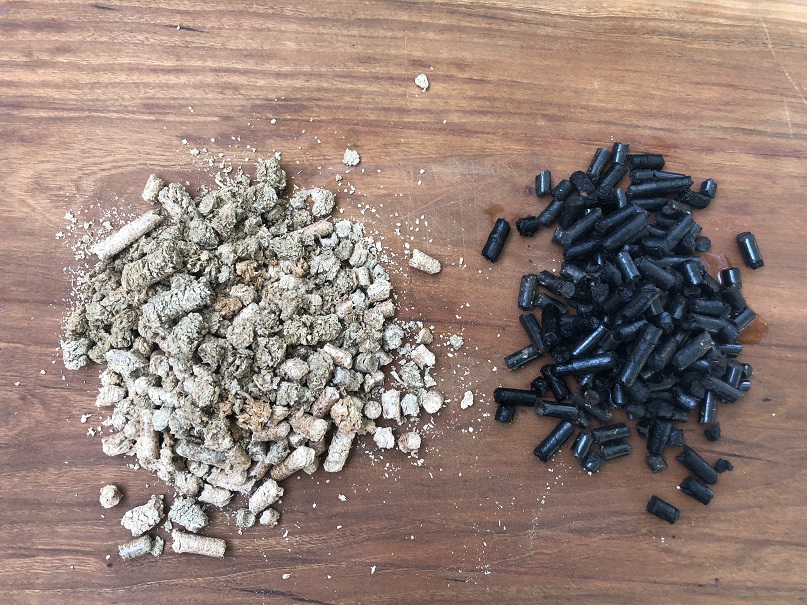
Upon closer inspection the results of the soak test were even more interesting.
Below is a close up picture of the charcoal pellets after I dumped them out of the soaking container. In the bottom of the picture you can see a pool of water that simply rolled off of the charcoal pellets.
You can see that some of the charcoal pellets did crack and become slightly deformed but there was absolutely zero indication of the swelling and crumbling that you get with standard wood pellets.

My answer to the question of, “Are charcoal pellets water resistant?” is absolutely yes.
I would be extremely surprised if these pellets would ever swell up and cause auger jams in any type of pellet grill.
Note: Although some free water was present after I dumped the charcoal pellets it was not anywhere near the 1/2 ounce of water that I initially added to the container. This suggests that the charcoal pellets are not “water repellent” but instead are better at soaking up water while maintaining their structural integrity.
Do Charcoal Pellets Burns Hotter?
The idea that pellets made from charcoal would burn hotter than pellets made from raw wood makes perfect sense. Simply stated, charcoal burns hotter than wood.
Many pellet grills struggle to get hot enough to properly sear steaks so the idea that you might be able to significantly bump up your temperatures simply by switching pellets is an exciting prospect.
To test the increased heating capacity of the charcoal pellets I first established a baseline value with regular wood pellets.
I turned the temperature setting of my Z Grills 1000 to High using hickory pellets for fuel. I placed a GrillGrate panel onto the cooking grate to give me a better target for temperature measurement and for the extra heat that the panels generate.
After running the grill on High for one hour the control panel displayed a temperature of 451F from the thermocouple inside the grill and I measured a maximum temperature of 584F on the Grill Grate panel. These results are typical for what I see when I use this grill at high temperatures..
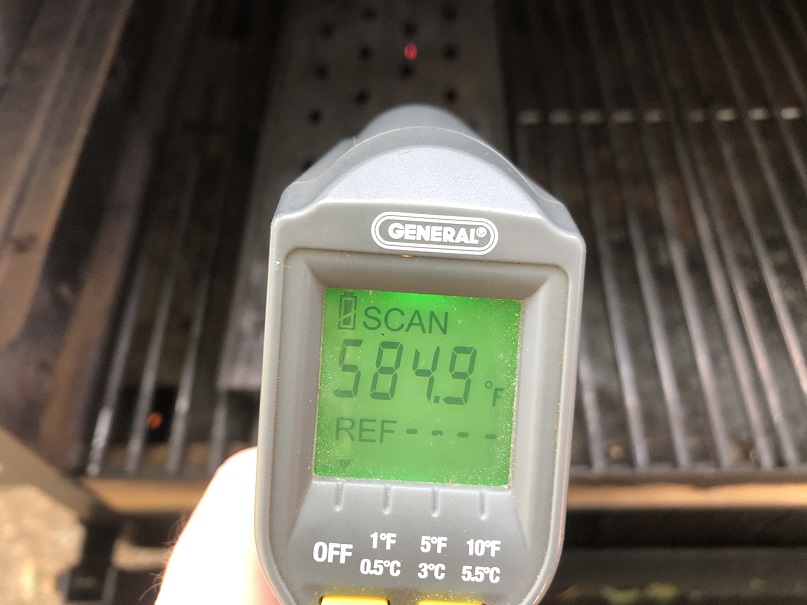
I let the hickory pellets finish burning to clear out the hopper. When I could clearly see the auger I filled the hopper with the charcoal pellets.
I let the grill run on High for 30 minutes with the charcoal pellets and then grilled some chicken drumsticks at high heat for 30 minutes (more on that below).
After the chicken was done grilling (1 hour of total burn time) I let the charcoal pellets burn for another full hour (2 hours total burn time.)
After two hours of burning the charcoal pellets on High the control panel displayed a temperature of 444F from the thermocouple inside the grill and I measured a maximum temperature of 571F on the Grill Grate panel.
Neither the built in thermocouple or the measured temperature at the GrillGrate panel indicated that my Z Grills ran hotter using the charcoal pellets than using regular wood pellets.
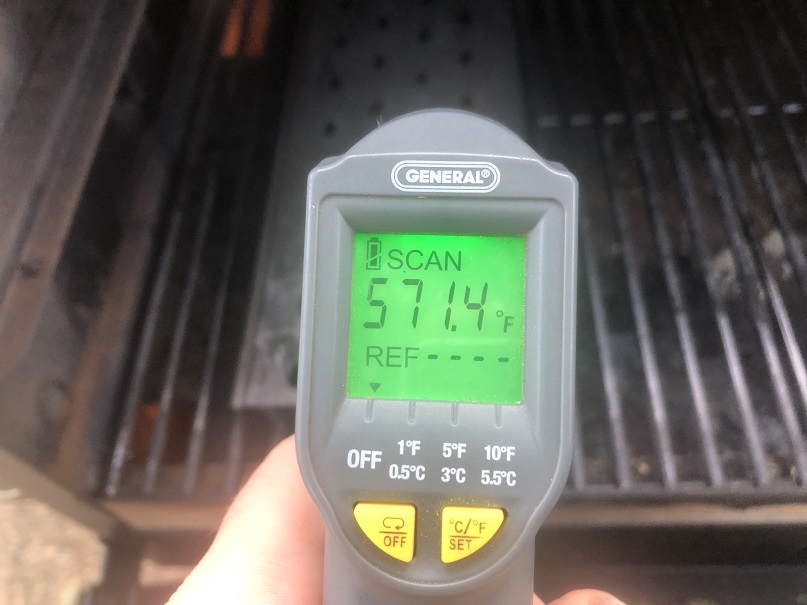
I was actually surprised by this result.
Two possible explanations for why my grill did not run hotter with the charcoal pellets are:
- Insufficient Air Flow
- Built In Temperature Regulation
Note: I do not have evidence to support either of these theories and am speculating as to what caused these results.
Insufficient Air Flow: While charcoal does have a higher fuel content than wood that is only part of the fire equation. In order to efficiently utilize the extra heat in the charcoal pellets they will need extra oxygen to support the combustion. Is it possible that the blower fan can’t deliver enough air to take full advantage of the extra BTUs?
Built In Temperature Regulation: Z Grills advertises that the maximum temperature my grill will obtain is 450F. Is it possible that the advertised maximum temperature is electronically regulated to protect components of the grill from high heat damage?
The “Just Grillin Outdoor Living” Youtube channel did a similar test using a Weber Smokefire and, while the results were not definitive to me, they indicate that the Smokefire does run hotter with these charcoal pellets.
My takeaway from this test is that while charcoal pellets have the potential to burn hotter, you may or may not see a higher top temperature in your grill.
I suspect that if you are using a Pit Boss, Camp Chef or any other pellet grill that has direct flame access for Flame Broiling then you would notice a temperature difference using these pellets.
Authentic BBQ Flavor
The claim that the charcoal pellets give “Authentic BBQ Flavor” is one that had me scratching my head going into these tests.
Here is why:
- Pellet grills are clean burning and are known for having less smoke flavor than smokers that use charcoal briquettes or wood.
- 100% hardwood charcoal is a naturally clean burning fuel that produces little smoke.
- Putting a low smoke fuel into a clean burning cooker should result in less smoke flavor, not more.
Granted, we could argue all day long about what the term “Authentic Barbecue Flavor” actually means as the term is completely arbitrary.
Cooking With Charcoal Pellets
Here are the cooks I did with the charcoal pellets to see what type of flavor they produced.
Hot and Fast Grilled Buffalo Drumsticks
These drumsticks were brined, seasoned with salt and pepper and grilled at ~450F for about 30 minutes and then basted in Buffalo sauce.
The chicken was delicious but had just about no smoke flavor. This result was not surprising since I grilled them at high temperature, which naturally produces less smoke, and the cook time was short.
I will say that while there was no smoke flavor there were also no “off flavors”. In short, during a fast, high heat cook the flavor from the charcoal pellets was completely neutral.

Low and Slow Beef Ribs
The next cook I used for the pellet evaluation was some beef chuck riblets. These were small (~2 lbs) cuts of beef ribs from the chuck.
I smoked the ribs at 250F for a little over three hours until the meat pulled way back from the bone and the meat was probe tender.
The beef ribs were tasty but there was absolutely no smoke ring present and the smoke flavor was absent.
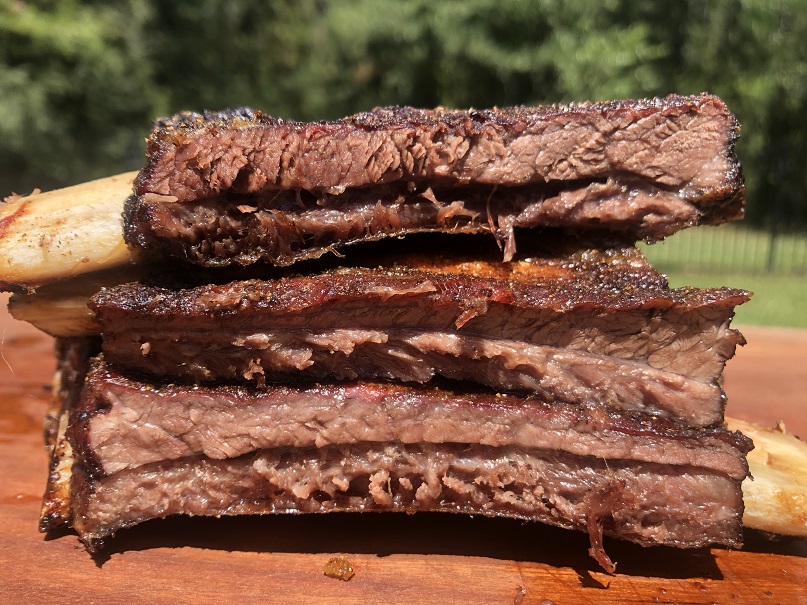
These results are somewhat consistent with the results shown in the video above from “Just Chillin Outdoor Living”. He smoked some chicken thighs using the charcoal pellets and used the “Smoke Boost” feature to impart extra smoke flavor. His result was that he couldn’t taste the smoke until the third bite of chicken.
Using a Smoke Tube
For my last cook I smoked a flank steak and used a smoke tube filled with charcoal pellets.
This was a six inch smoke tube that was 2/3 full of pellets. I used a torch for 30 seconds to light the pellets. Shortly after I closed the lid the flames went out and the tube produced a significant amount of smoke.

The steak was smoked at 225F and pulled when it reached an internal temperature of 135F.
The smoke flavor on the flank was just about perfect. I was really pleased with the results using he smoke tube and would not hesitate to use this method again.
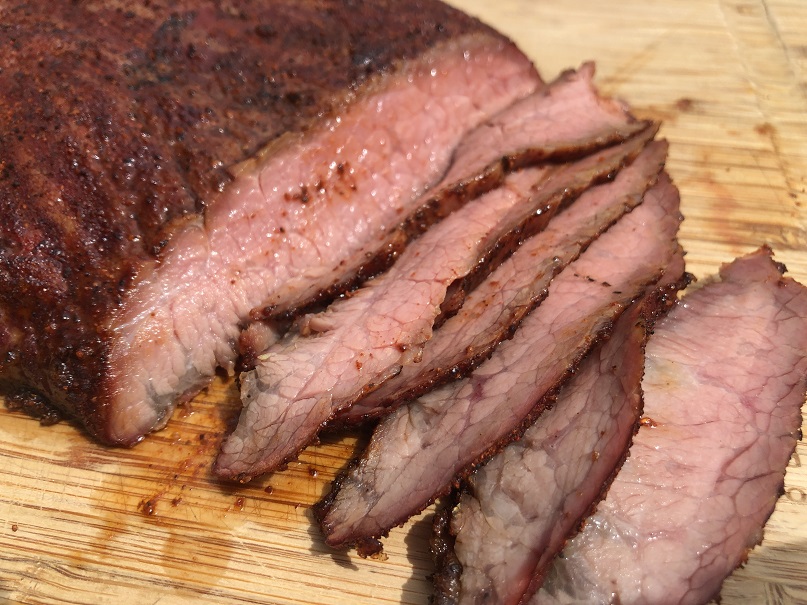
Are the Charcoal Pellets from Royal Oak Good?
While I was unable to get the benefits of increased top temperature or “authentic barbecue flavor” I was absolutely able to see that these pellets are water resistant and that means a LOT to me.
I love the fact that I can load up all of my pellet grills with charcoal pellets and stop worrying about humidity or a little sideways rain causing them to swell up and jam my auger.
Another thing that I LOVE about these pellets is that the look sexy as heck. I got a kick out of seeing the shiny black pellets inside the black hopper of my pellet grill. It made my grill look like one of those Mercedes AMG Black Edition sedans.

The bottom line is that I will be buying more of these pellets.
I still need to figure out the best way of using them and might end up running my grill with charcoal pellets and using hickory pellets in a smoke tube. It might be that I could run my grill in Smoke Mode for an hour or two when smoking baby backs ribs and that will give me the flavor profile I want.
Either way, I like the pellets enough that I am going to buy more and continue experimenting.
On a different note, these pellets are made in Canada which suggests Royal Oak is using a third party manufacturer. If that is the case, then we should expect other brands to hit the market with similar pellets soon.